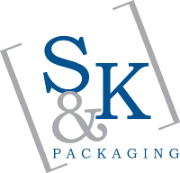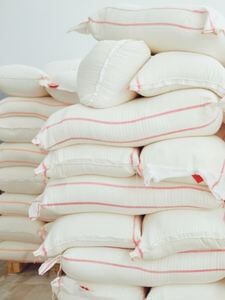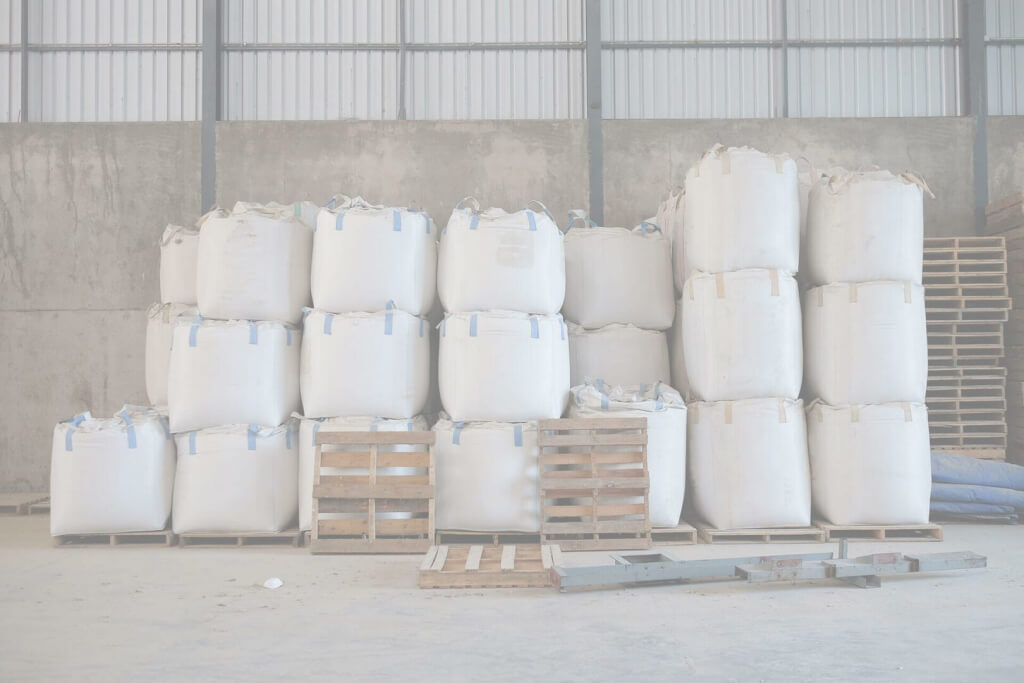Producers and suppliers of bulk materials need efficient ways to transport those materials to distributors who will package them for retail sale. Learn more about FIBC bulk bags, what they are, and their uses.
Those Are Some Big Bags!
Flexible intermediate bulk containers, or FIBC bulk bags (also known as big bags or super sacks), are large bags that can hold up to a ton (2,000 pounds), or in some cases even up to 4,000 pounds, of dry goods. They are used for transporting “flowable” materials like powders, grains, plastic pellets, sand, fertilizer, cement mixes, minerals, or spices.
FIBC bulk bags come in several types of designs, including four-panel, U-shaped, or baffle designs. Filling (or emptying) is through an open top, spout, or duffel-style opening. These bags usually have handles on the corners through which the prongs of a forklift can be inserted for lifting.
FIBC bulk bags are very strong but also lightweight, so they can contain almost 300 times their weight in material. Even small reductions in weight can save on transportation costs and make shipment and storage easier.
Grading
Most FIBC bags are made of woven polyethylene or polypropylene (plastic) fibers. These fibers may or may not be coated. Specialty bags may be rated as food or pharmaceutical grade, ventilated or agricultural bags (for transporting things like bulk foods, which allows the material to “breathe” and prevent spoilage), or bags tested to withstand stringent requirements to prevent spilling hazardous materials.
Electrostatic Types
FIBC bags fall into four groups based on their electrostatic properties. When loading or unloading materials, friction can cause static electricity, which can be very dangerous in environments that contain flammable materials or gases.
FIBC bags are sorted into four groups based on whether the bag can dissipate static electricity to make them safe to use with flammable materials or in an environment where combustible gases or powders may be present:
- Type A: no electrostatic properties. These bags MUST NOT be used in combustible environments or to transport flammable or combustible materials.
- Type B: no means of dissipating static electricity. However, they are made of materials with a low breakdown voltage, intended to decrease the probability of dangerous brush discharges. However, normal brush discharges can still happen, so these bags must not be used with flammable materials or in environments that contain them.
- Type C: these bags have conductive threads or yarns woven in, which can dissipate static electricity when properly grounded. Although these bags can be used to transport some flammable materials, grounding is subject to human error. The bags won’t ground properly if damaged, so these bags can still be hazardous in combustible environments.
- Type D: these are antistatic bags made from fabric that protects against static electricity, and they don’t have to be grounded in the same way as Type C bags. However, if contaminants like grease or other flammable or combustible materials get on the surface of the bag, the protective properties are compromised.
Now that you know about what FIBC bulk bags are and their uses, contact S&K Packaging to discuss your bulk bag needs. We’ll work with you to find the solution that’s best for the materials you need to store, transport, or distribute.


